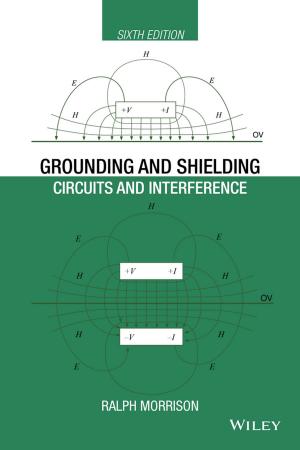Principles of Polymer Processing
Nonfiction, Science & Nature, Technology, Textiles & Polymers, Engineering, Chemical & Biochemical| Author: | Zehev Tadmor, Costas G. Gogos | ISBN: | 9780470355923 |
| Publisher: | Wiley | Publication: | December 2, 2013 |
| Imprint: | Wiley-Interscience | Language: | English |
| Author: | Zehev Tadmor, Costas G. Gogos |
| ISBN: | 9780470355923 |
| Publisher: | Wiley |
| Publication: | December 2, 2013 |
| Imprint: | Wiley-Interscience |
| Language: | English |
Thoroughly revised edition of the classic text on polymer processing
The Second Edition brings the classic text on polymer processing thoroughly up to date with the latest fundamental developments in polymer processing, while retaining the critically acclaimed approach of the First Edition. Readers are provided with the complete panorama of polymer processing, starting with fundamental concepts through the latest current industry practices and future directions. All the chapters have been revised and updated, and four new chapters have been added to introduce the latest developments.
Readers familiar with the First Edition will discover a host of new material, including:
* Blend and alloy microstructuring
* Twin screw-based melting and chaotic mixing mechanisms
* Reactive processing
* Devolatilization--theory, mechanisms, and industrial practice
* Compounding--theory and industrial practice
* The increasingly important role of computational fluid mechanics
* A systematic approach to machine configuration design
The Second Edition expands on the unique approach that distinguishes it from comparative texts. Rather than focus on specific processing methods, the authors assert that polymers have a similar experience in any processing machine and that these experiences can be described by a set of elementary processing steps that prepare the polymer for any of the shaping methods. On the other hand, the authors do emphasize the unique features of particular polymer processing methods and machines, including the particular elementary step and shaping mechanisms and geometrical solutions.
Replete with problem sets and a solutions manual for instructors, this textbook is recommended for undergraduate and graduate students in chemical engineering and polymer and materials engineering and science. It will also prove invaluable for industry professionals as a fundamental polymer processing analysis and synthesis reference.
Thoroughly revised edition of the classic text on polymer processing
The Second Edition brings the classic text on polymer processing thoroughly up to date with the latest fundamental developments in polymer processing, while retaining the critically acclaimed approach of the First Edition. Readers are provided with the complete panorama of polymer processing, starting with fundamental concepts through the latest current industry practices and future directions. All the chapters have been revised and updated, and four new chapters have been added to introduce the latest developments.
Readers familiar with the First Edition will discover a host of new material, including:
* Blend and alloy microstructuring
* Twin screw-based melting and chaotic mixing mechanisms
* Reactive processing
* Devolatilization--theory, mechanisms, and industrial practice
* Compounding--theory and industrial practice
* The increasingly important role of computational fluid mechanics
* A systematic approach to machine configuration design
The Second Edition expands on the unique approach that distinguishes it from comparative texts. Rather than focus on specific processing methods, the authors assert that polymers have a similar experience in any processing machine and that these experiences can be described by a set of elementary processing steps that prepare the polymer for any of the shaping methods. On the other hand, the authors do emphasize the unique features of particular polymer processing methods and machines, including the particular elementary step and shaping mechanisms and geometrical solutions.
Replete with problem sets and a solutions manual for instructors, this textbook is recommended for undergraduate and graduate students in chemical engineering and polymer and materials engineering and science. It will also prove invaluable for industry professionals as a fundamental polymer processing analysis and synthesis reference.















